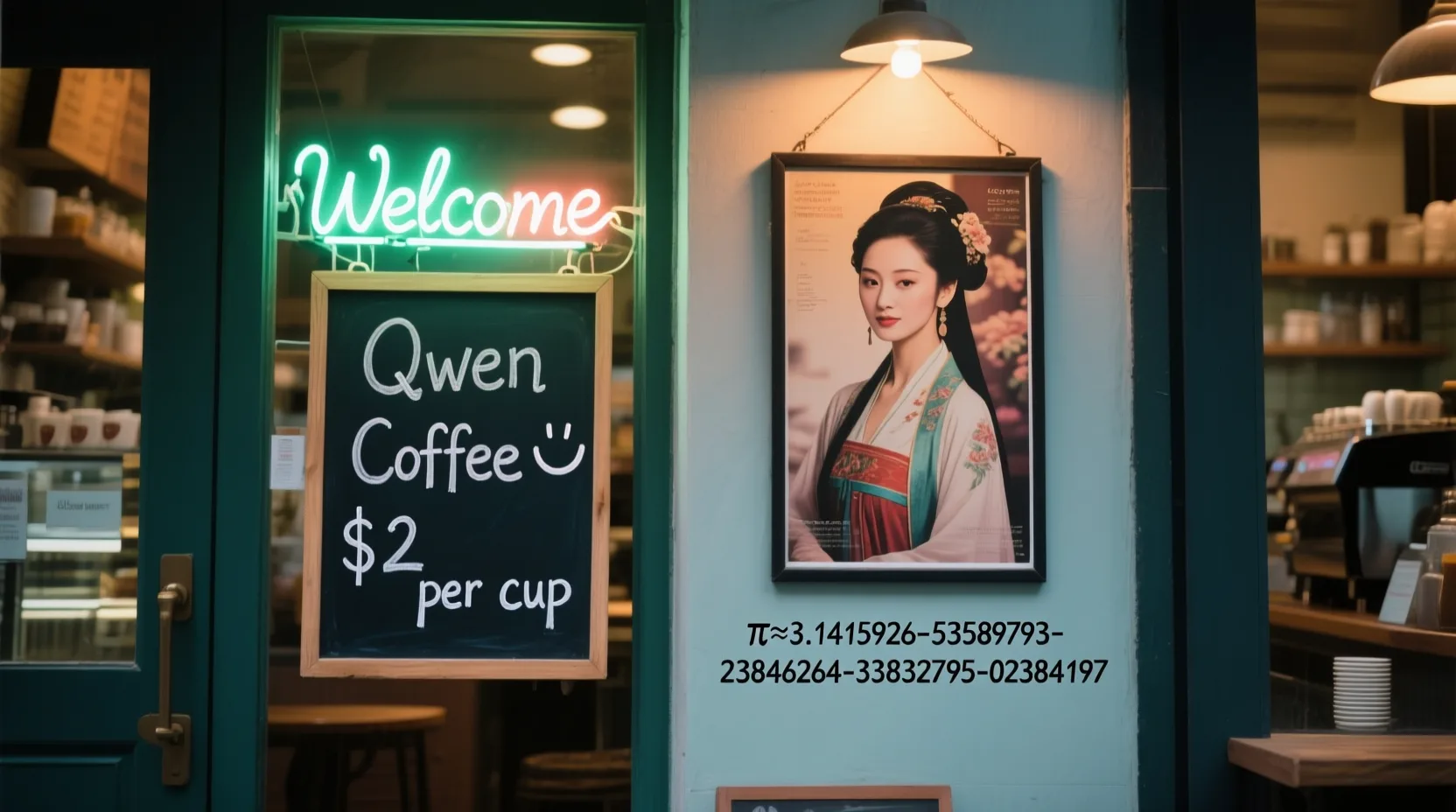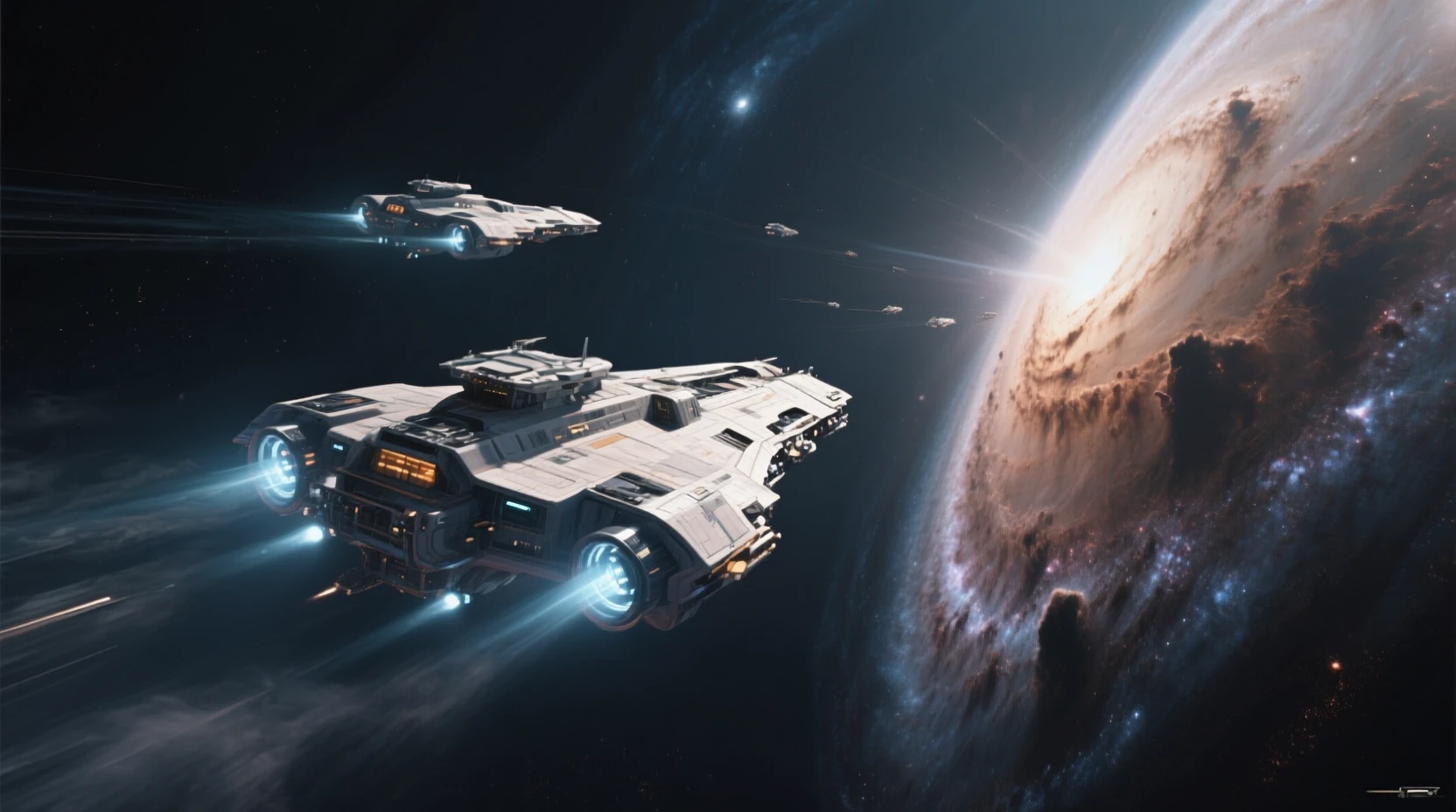Deploying Qwen-Image for Advanced Text-Integrated Image Generation on Vast.ai

Introduction
Qwen-Image revolutionizes image generation with its exceptional ability to render complex text directly within images, supporting multiple languages including English and Chinese with perfect typographic detail. This powerful foundation model from Alibaba's Qwen series goes beyond simple image creation, offering advanced editing capabilities, style transfer, and precise control over visual elements.
What sets Qwen-Image apart is its nuanced understanding of text-image relationships. While other models struggle with text rendering, Qwen-Image seamlessly integrates readable text into visuals, making it ideal for creating signage, posters, infographics, and artistic compositions that require precise text placement and formatting.
Vast.ai provides the perfect platform for deploying Qwen-Image, offering access to high-performance GPUs at competitive prices with the flexibility to scale based on your needs.
In this guide, you'll deploy Qwen-Image on Vast.ai and explore its capabilities for text-integrated image generation.
Setting Up the Environment
First, install the Vast CLI and configure your API key:
pip install --upgrade vastai
export VAST_API_KEY="<your-api-key>"
vastai set api-key $VAST_API_KEY
You can obtain your API key from the Vast.ai Account Page.
Choosing the Right Hardware
Qwen-Image requires substantial GPU resources for optimal performance:
- GPU Memory: Minimum 80GB VRAM for the full model
- Recommended Hardware: NVIDIA A100 80GB or H100
- Storage: 200GB disk space for model weights and dependencies
Search for suitable instances with these specifications:
vastai search offers "compute_cap >= 750 \
gpu_ram >= 80 \
num_gpus = 1 \
static_ip = true \
direct_port_count >= 1 \
verified = true \
disk_space >= 150 \
rentable = true"
This search filters for:
- Modern GPUs with compute capability 7.5+
- At least 80GB VRAM for the model
- Static IP for stable connections
- Verified providers for reliability
- Adequate storage for model and outputs
Deploying Qwen-Image
Deploy the instance using a pre-configured Docker image optimized for transformer models:
export INSTANCE_ID=<instance-id>
vastai create instance $INSTANCE_ID \
--image huggingface/transformers-pytorch-gpu \
--env '-p 8888:8888' \
--disk 200 \
--args bash -c "pip install jupyter && jupyter notebook --ip=0.0.0.0 --port=8888 --no-browser --allow-root --NotebookApp.token='' --NotebookApp.password=''"
Key parameters explained:
--image: HuggingFace's PyTorch GPU image with ML libraries pre-installed--env '-p 8888:8888': Maps Jupyter's default port for external access--disk 200: Allocates 200GB for model weights and generated images--args: Auto-installs Jupyter and launches a passwordless notebook server
Connecting to Your Instance
After deployment:
- Navigate to the Instances tab
- Find your instance and wait for "Running" status
- Look for the "Open Ports" section in instance details
- Click the port mapping link (e.g.,
123.123.123.123:12345 -> 8888/tcp) - This opens Jupyter directly in your browser
- Create a new notebook or upload the example notebook if available
Installing Dependencies
Install the required packages in your notebook:
apt install -y git
pip install git+https://github.com/huggingface/diffusers
The latest diffusers library from GitHub includes Qwen-Image support.
Loading the Model
Initialize Qwen-Image with optimal settings for GPU deployment:
from diffusers import DiffusionPipeline
import torch
model_name = "Qwen/Qwen-Image"
# Load the pipeline
if torch.cuda.is_available():
torch_dtype = torch.bfloat16
device = "cuda"
else:
torch_dtype = torch.float32
device = "cpu"
pipe = DiffusionPipeline.from_pretrained(model_name, torch_dtype=torch_dtype)
pipe = pipe.to(device)
The model uses bfloat16 precision on GPU for optimal memory usage and performance.
Using Qwen-Image
Now let's explore Qwen-Image's text rendering capabilities with examples:
Example 1: Complex Text Integration with Multiple Languages
import os
positive_magic = {
"en": "Ultra HD, 4K, cinematic composition.", # for english prompt
}
# Create img folder if it doesn't exist
os.makedirs("img", exist_ok=True)
# Generate image
prompt = '''A coffee shop entrance features a chalkboard sign reading "Qwen Coffee 😊 $2 per cup," with a neon light beside it displaying "Welcome". Next to it hangs a poster showing a beautiful Chinese woman, and beneath the poster is written "π≈3.1415926-53589793-23846264-33832795-02384197". Ultra HD, 4K, cinematic composition'''
negative_prompt = " " # using an empty string if you do not have specific concept to remove
# Set image dimensions (16:9 aspect ratio)
width, height = 1664, 928
image = pipe(
prompt=prompt + positive_magic["en"],
negative_prompt=negative_prompt,
width=width,
height=height,
num_inference_steps=50,
true_cfg_scale=4.0,
generator=torch.Generator(device="cuda").manual_seed(42)
).images[0]
# Save image to img folder
image.save("img/example_1.png")
# Display the image
display(image)
Output

This example demonstrates Qwen-Image's ability to:
- Render multiple text elements (chalkboard, neon sign, poster)
- Handle emojis and special characters
- Integrate mathematical constants with precise formatting
- Maintain readability across different text styles
Example 2: Creative Fantasy Scene
positive_magic = {
"en": "Ultra HD, 4K, cinematic composition.", # for english prompt
}
# Create img folder if it doesn't exist
os.makedirs("img", exist_ok=True)
# Generate image
prompt = '''Rare photo: UFO hovering over a yeti riding the Loch Ness monster.'''
negative_prompt = " " # using an empty string if you do not have specific concept to remove
# Set image dimensions (16:9 aspect ratio)
width, height = 1664, 928
image = pipe(
prompt=prompt + positive_magic["en"],
negative_prompt=negative_prompt,
width=width,
height=height,
num_inference_steps=50,
true_cfg_scale=4.0,
generator=torch.Generator(device="cuda").manual_seed(42)
).images[0]
# Save image to img folder
image.save("img/example_2.png")
# Display the image
display(image)
Output

This showcases Qwen-Image's creative capabilities in composing imaginative scenarios.
Example 3: Futuristic Space Scene
positive_magic = {
"en": "Ultra HD, 4K, cinematic composition.", # for english prompt
}
# Create img folder if it doesn't exist
os.makedirs("img", exist_ok=True)
# Generate image
prompt = '''Now I want you to show a spaceships approaching Andromeda Galaxy!, it should be futuristic spaceships out on exploring universe'''
negative_prompt = " " # using an empty string if you do not have specific concept to remove
# Set image dimensions (16:9 aspect ratio)
width, height = 1664, 928
image = pipe(
prompt=prompt + positive_magic["en"],
negative_prompt=negative_prompt,
width=width,
height=height,
num_inference_steps=50,
true_cfg_scale=4.0,
generator=torch.Generator(device="cuda").manual_seed(42)
).images[0]
# Save image to img folder
image.save("img/example_3.png")
# Display the image
display(image)
Output

This demonstrates Qwen-Image's ability to create detailed sci-fi scenes.
Advanced Features and Capabilities
Flexible Aspect Ratios
Qwen-Image supports various aspect ratios for different use cases:
aspect_ratios = {
"1:1": (1328, 1328), # Social media posts
"16:9": (1664, 928), # Widescreen displays
"9:16": (928, 1664), # Mobile/portrait content
"4:3": (1472, 1140), # Traditional displays
"3:4": (1140, 1472), # Portrait photos
"3:2": (1584, 1056), # Standard photos
"2:3": (1056, 1584), # Portrait standard
}
Generation Parameters
Fine-tune your outputs with these key parameters:
num_inference_steps: Higher values (50-100) for better qualitytrue_cfg_scale: Controls prompt adherence (3.0-7.0 range)generator: Set seed for reproducible resultsnegative_prompt: Specify elements to avoid
Practical Applications
Qwen-Image's unique text rendering capabilities enable numerous applications:
- Marketing Materials: Create posters, banners, and advertisements with perfectly rendered text
- Educational Content: Generate infographics and diagrams with clear labels and annotations
- Social Media: Design posts with integrated text overlays and captions
- Multilingual Content: Produce visuals with text in multiple languages
- Creative Projects: Combine artistic imagery with typographic elements
- UI/UX Mockups: Generate interface designs with readable text elements
Performance Optimization
To maximize performance on Vast.ai:
- Use bfloat16 precision: Reduces memory usage while maintaining quality
- Batch generation: Process multiple prompts together when possible
- Cache the model: Keep it loaded between generations to avoid reload overhead
- Optimize resolution: Start with lower resolutions for testing, then increase for final outputs
Conclusion
Qwen-Image represents a significant advancement in image generation technology, particularly in its ability to seamlessly integrate readable text into visual content. Its support for multiple languages, mathematical notation, and various text styles makes it uniquely suited for projects requiring precise text-image integration.
By deploying on Vast.ai, you gain access to powerful GPUs capable of running this advanced model efficiently. Whether you're creating marketing materials, educational content, or artistic compositions, Qwen-Image provides the tools to generate professional-quality visuals with integrated text.
Next Steps
Try these to explore further:
- Experiment with multilingual prompts: Test the model's capabilities with Chinese, Japanese, or mixed-language text
- Create branded content: Generate marketing materials with your company's text and logos
- Build an API service: Wrap the model in a REST API for integration with your applications
- Explore style transfer: Use the model's editing capabilities to transform existing images
Get started on Vast.ai and experience Qwen-Image today!



